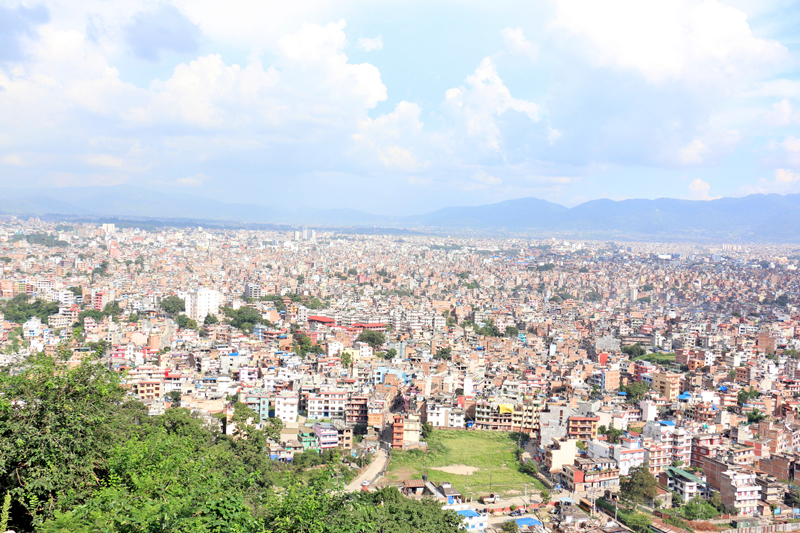Temperature dips in Kathmandu Valley
Kathmandu, December 12
With the minimum temperature continuously dipping in Kathmandu Valley, severity of cold has increased in the mornings, evenings and night time for the past few days.
Meteorological Forecasting Division said the minimum temperature has hovered around 4 to 5 degree Celsius and that has increased the discomfort among the valley denizens.
Likewise, the Tarai region has been covered with dense fog from early morning for the last few days and MFD has warned that the fog will continue for up to a week.
The division’s meteorologist Suvash Rimal said there is a chance of continuous dense fog throughout the next three days in western Terai from Butwal onwards. “There may be dense fog in the eastern Tarai early in the morning, but it will clear away in the late afternoon for a few days whereas western Tarai may be shrouded in fog for a few days,” he told The Himalayan Times.
He added that such weather activity had developed as a result of natural process as the country was heading towards mid-winter which is marked by severe cold every year. The last week of December and the first week of January is considered to be mid-winter, that is when Nepal experiences the coldest days of the year.
“With mid-winter approaching, the minimum temperature in Kathmandu Valley will fall around 3 degree within a week and then again it will fall around 1 Degree Celsius when the country is in the grip of mid-winter.” Rimal added, “So far, the winter appears to be normal with fog engulfing the Tarai and minimum temperature falling in Kathmandu Valley.”
MFD recorded 5 Degree Celsius minimum temperature in Kathmandu on Monday whereas the minimum temperature was 5, 4.4, 4.4, 4.5, 5.3 and 6 degree Celsius in 11, 10, 9, 8, 7 and 6 December respectively.
Minimum temperature on Monday was 5.8 Celsius in Dipayal, 9.7 in Dadeldhura, 14.2 in Dhangadi, 5.7 in Birendranagar, 12.7 in Nepalgunj, -3 in Jumla, 7.5 in Dang, 8.9 in Pokhara, 11.2 in Bhairahawa, 10.6 in Simara, 9.2 in Okhaldhunga, 6.2 in Taplejung, 9.4 in Dhankuta, and 10.5 in Biratnagar. Generally after the monsoon season, October and November tare considered as post-monsoon season. Winter starts in Nepal from December when days become shorter and minimum temperature hits up to 1 and around zero degrees Celsius.
Climatic conditions vary in Nepal from one place to another according to geographical features. In the north, the summers are cool and winters are severe; while in the south, summers are tropical and winters are mild. Nepal has five seasons: spring, summer, monsoon, autumn and winter.
In the Tarai, summer temperatures exceed 37° C and it’s higher than that in some areas. Winter temperatures range from 7°C to 23°C in the Tarai. In mountainous regions, hills and valleys, summers are temperate while in winter temperatures can plummet to under sub-zero.
The Himalayas act as a barrier to the cold wind blowing from Central Asia in winter, and forms the northern boundary for the monsoon wind patterns. Eighty per cent of all the rain in Nepal is received during monsoon (June-September).
Winter rains are more pronounced in the western hills. The average annual rainfall is 1,600 mm, but it varies with the different eco-climatic zones, such as 3,345 mm is received in Pokhara, while and below 300 mm rain is received in Mustang.






